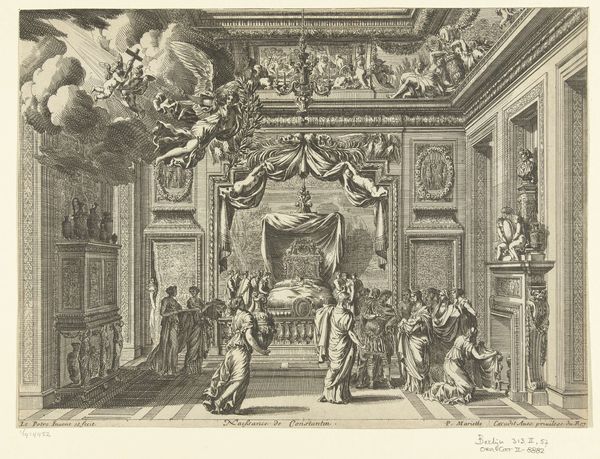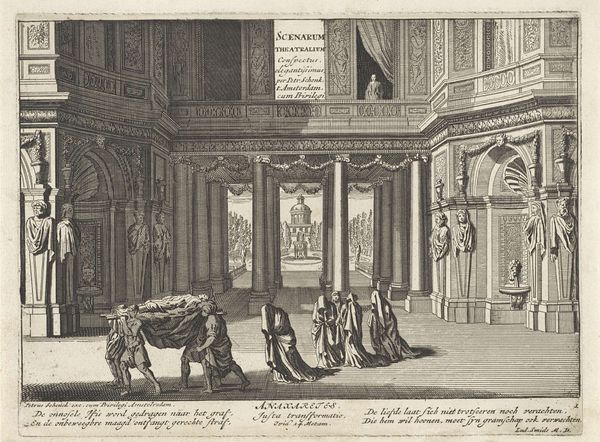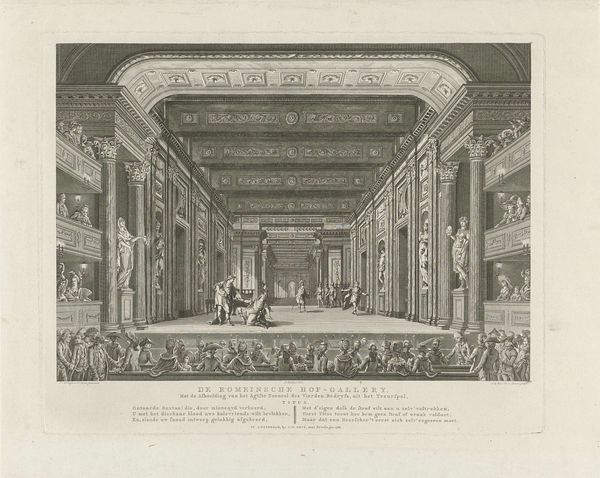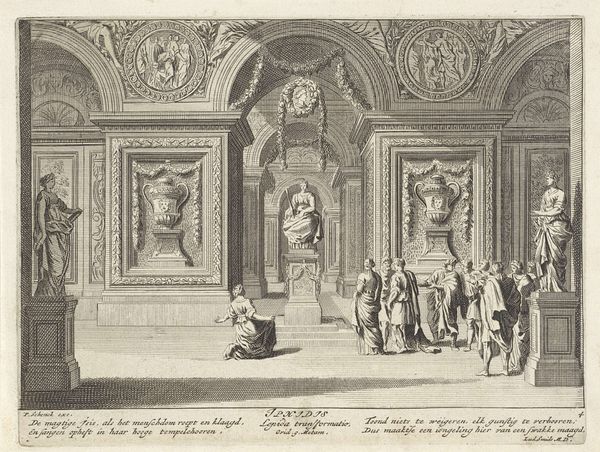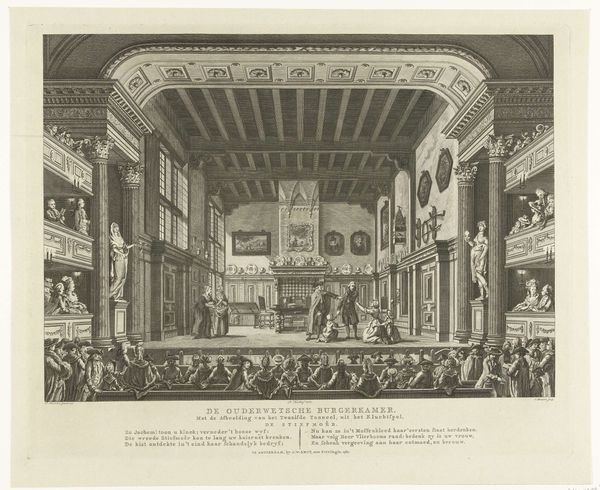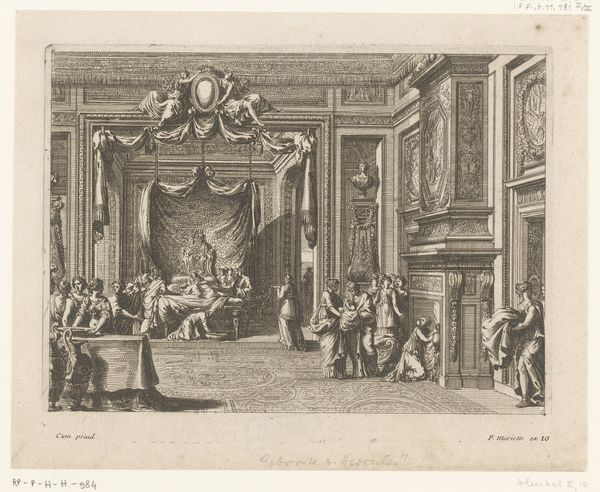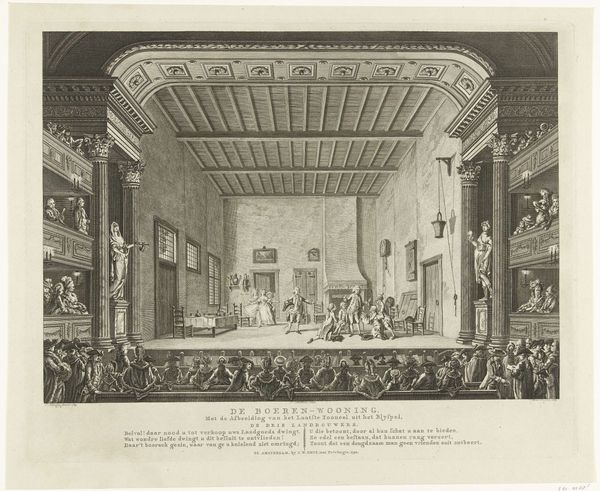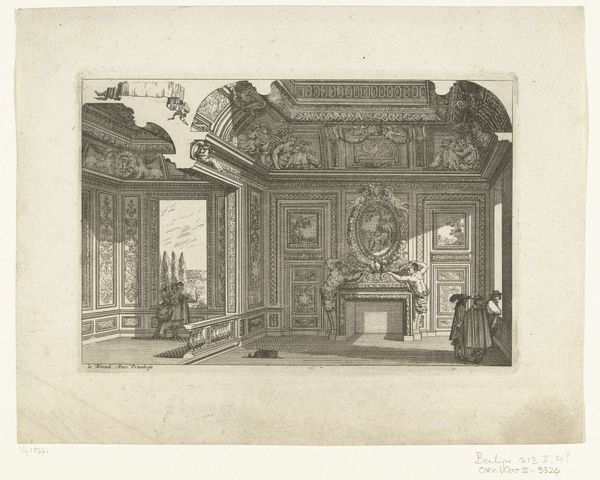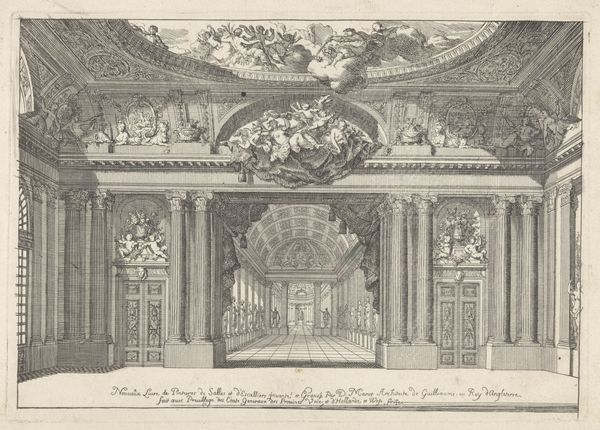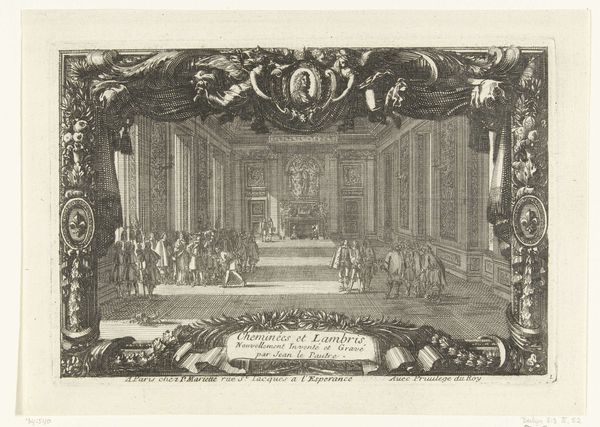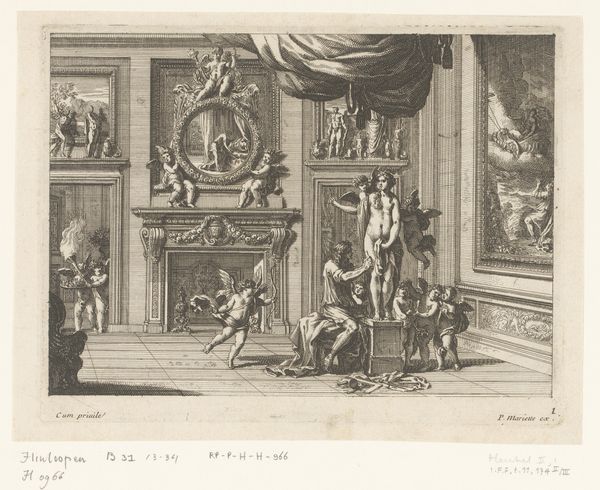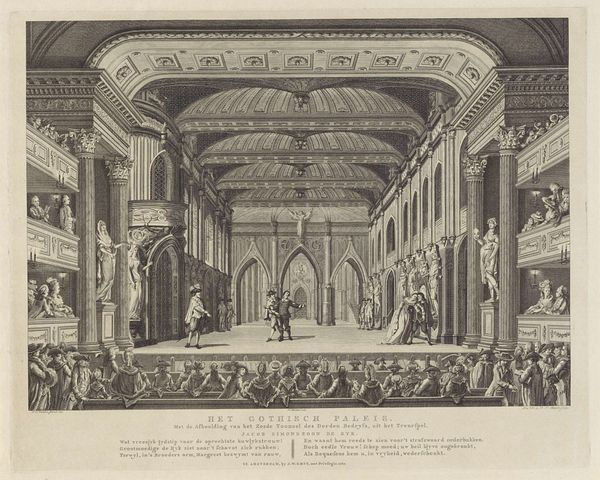
print, engraving
#
narrative-art
#
baroque
# print
#
old engraving style
#
figuration
#
line
#
history-painting
#
academic-art
#
engraving
Dimensions: height 168 mm, width 223 mm
Copyright: Rijks Museum: Open Domain
Curator: This is a print from between 1675 and 1711, now held at the Rijksmuseum. It's entitled "Cinyras probeert zijn dochter Myrrha te vermoorden," or "Cinyras Tries to Murder His Daughter Myrrha," and its authorship is anonymous. The technique is engraving. Editor: The staging of it feels so theatrical, doesn't it? Almost like a backdrop to a Greek tragedy unfolding right before our eyes. It's very...dramatic, of course, with the father bearing down on his daughter with the sword. Curator: That's the Baroque influence for you—a clear preference for dynamic movement, emotion, and complex compositions. The setting is important; the elaborate architectural elements point to a very specific cultural moment. The tragedy of Myrrha was popular, frequently revisited by artists and playwrights through the ages. Editor: Right. And the way those cherubic figures float above the terrible deed—talk about contrast! You know, as terrible as the event portrayed may be, there is this underlying feeling, especially if you divorce it from all context and view the visual arrangement by itself, like it may turn out well in the end for the woman here? This is not just some fatal moment cast in stone... There are some saving graces present. Curator: Baroque art often does grapple with complex emotional and moral ambiguities. It aimed to evoke empathy in the viewer. Prints like this one were meant to disseminate classical narratives among a broader audience. It brings previously restricted cultural treasures to an eager, more open public. Editor: Looking closer, you see so much ornate detailing everywhere else. It kind of highlights how shockingly stark that central scene actually is. So what is essentially quite graphic gets somewhat softened and cushioned. I think this artwork becomes a study of contrasts, where cruelty meets divine and domestic order. The composition is not purely informative. It has flair. Curator: Absolutely, the composition guides our eye directly to that crucial confrontation. What strikes me is how an artist could convey all this richness in a single engraving. Prints like this one helped popularize history-painting in Baroque-era society. It made these once obscure topics widespread points of interest and even public knowledge. Editor: It's funny, even though it's static and from so long ago, this image makes you question what the figures in the scene feel, what happened leading up to that specific instant, and most of all, how the deed will change everybody from that moment on. Curator: I think what has stayed with me is realizing just how images—and narratives—shift across time, and how these prints democratized narratives for new generations.
Comments
No comments
Be the first to comment and join the conversation on the ultimate creative platform.

